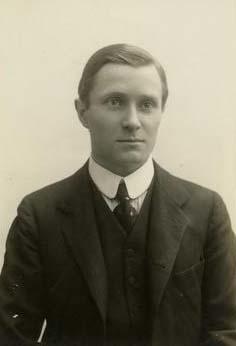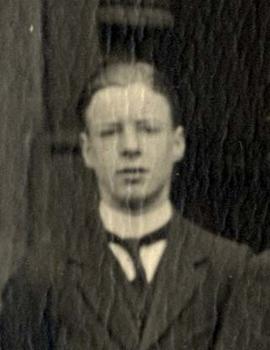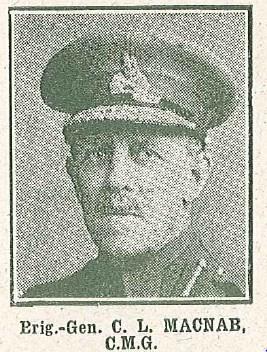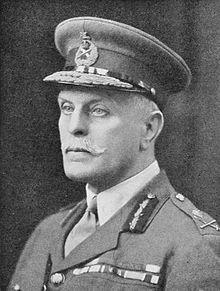Long-Hartley, Paul, son of Arthur Norman Long-Hartley and Rosa Pauline, d. of Paul Long; b. 18 Apr. 1924; adm. Sept. 1937 (B); left July 1938; Flt Serg. Pathfinder Force RAF; killed in action 16 June 1944.
Paul Long-Hartley was born at Islington, London on the 18th of April 1924 the only son of Arthur Norman Long-Hartley and Rosa Pauline (nee Long, later King) Long-Hartley of 49, Barrington Court, Muswell Hill in Middlesex. He was educated at Westminster School where he was up Busby’s from September 1937 to July 1938.
He enlisted in the Royal Air Force Volunteer Reserve where he trained as an Air Gunner and rose to the rank of Flight Sergeant.
On the night of the 15th/16th of June 1944, Bomber Command dispatched 119 Lancasters, 99 Halifaxes and 9 Mosquitos for operations on the railway yards at Lens and at Valenciennes. The weather was clear and the target was accurately bombed.
Paul Long-Hartley and his crew took off from RAF Little Staughton at 11.55pm on the 15th of June 1944 in Lancaster Mk III ND502 60-N for the operation on Lens. Paul Long-Hartley was not a regular member of this crew but was on standby that night as the crew’s regular mid upper gunner had burned his hand and he agreed to take the injured man’s place. Having bombed the target the aircraft was heading home when it was attacked by two enemy night fighters and shot down. It crashed at St Catherine near Arras at 1.20am with the loss of all but one of the crew.
The crew was: -
Pilot Officer Norman James Tutt (Pilot)
Flight Sergeant Sidney Parr (Flight Engineer)
Flight Sergeant Harold Harris (Navigator)
Flight Sergeant Richard Harry Ames (Air Bomber)
Flight Sergeant Paul Long-Hartley (Mid Upper Gunner)
Flying Officer William Thomas Williams (Rear Gunner)
Flight Sergeant Robert Frederick Boots (Wireless Operator) (Evaded)
Theirs was one of six aircraft which were lost during the raid on Lens.
The only survivor from the aircraft was wireless operator Robert Boots, who later wrote: - “After bombing the target at Lens we were attacked by two enemy aircraft and the order was given to bale out. As the dead body of the navigator was blocking the escape hatch, I could not get out there. Flames enveloped the aircraft and suddenly I was blown out and found myself in mid-air. I landed at about 0100 hours in a field SW of Lens, and walked until I reached a cemetery where I slept the night.”
In the morning he made his way to Arras and on to Beugnatre where he was taken in by the village Mayor. He was moved to Billy Montigny which was liberated by Allied troops on the 2nd of September 1944 and he returned to England on the 11th of September 1944.
His mother received the following letter dated the 21st of June 1948: -
“It is with deep regret that I refer again to the sad loss of your son Flight Sergeant Paul Long-Hartley, but I wish to inform you that investigations undertaken by the Royal Air Force Missing Research and Enquiry Service in France have now been completed, and the following facts made known. His aircraft was shot down over the target area by a German night fighter and crashed at St. Catherine, in the northern suburbs of Arras, at 1.20am on the 16th June, 1944. Unhappily, the only survivor was Flight Sergeant Boots, who bailed out and successfully evaded capture. Upon arrival at the scene of the crash, the Germans recovered the bodies of the other six members of the crew and identified one as Pilot Officer Tutt, whom they buried in Grave 9, at St. Catherine Cemetery. Three others, whose identities could not be determined, were interred together in Grave 10, while the remaining two were taken to the Institute Pathologique, Arras prior to burial elsewhere. Enquiries made locally indicated that these two airmen were your son and Flying Officer Williams, and it was believed at first that they had been buried together in the 1914-18 British Cemetery at Arras, in Grave 4, Row 8A. Exhumation subsequently undertaken however, disproved this theory, and further extensive enquiries revealed that they had in fact been buried as unknown in Grave 69 and 71 at Arras Communal Cemetery. In an endeavour to confirm identity, exhumation was undertaken, but unhappily, it was found that both had been buried without clothing and neither could be identified. In such circumstances it was decided that in order to provide for their correct commemoration, they should be re-interred with their unidentified comrade in the grave adjacent to Pilot Officer Tutt’s at St. Catherine Cemetery. Grave 10 has therefore now been made the communal place of burial of all five members of the crew not individually identified, and re-registered accordingly in the names of Flight Sergeants Ames, Parr and Harris, Flying Officer Williams and your son. In conveying these final burial details, I wish to add that his pay book, identity card and driving licence have now been received with captured German documents relating to the crash. I am enclosing the driving licence for your retention but the other two items will be retained with your son’s official records”
He is buried at Ste. Catherine Communal Cemetery Row 2, Collective Grave 5.





